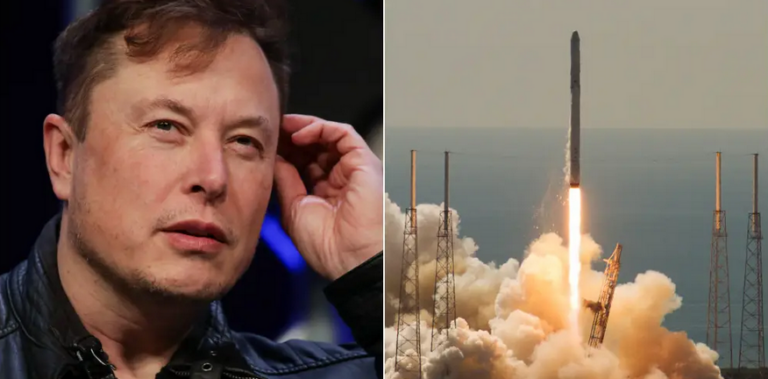Elon Musk’s SpaceX said it has lost up to 40 Starlink satellites that it launched into orbit last week because of a geomagnetic storm.
The aerospace company sent 49 Starlink satellites into low Earth orbit on Thursday via a Falcon 9 rocket.
Around 80% of those satellites were “significantly impacted” by a geomagnetic storm Friday, SpaceX announced in a statement Tuesday.
Geomagnetic storms are triggered by disturbances between the Earth’s magnetic field and charged particles from the sun, known as solar wind, according to the Space Weather Prediction Center.
The speed and intensity of the storm caused the “atmospheric drag” to climb to levels 50% higher than previous launches, SpaceX said in the statement, making it harder for satellites to reach their orbital position.
SpaceX said that Starlink tried to fly the satellites in “safe-mode” to reduce atmospheric drag but they still weren’t able to reach their intended destination.
Up to 40 of the satellites will reenter the Earth’s atmosphere and burn up, with some already having done so, Musk’s firm said.
Nuclear fusion: Scientists celebrate “important step” towards inexhaustible energy source (video)
SpaceX said in the statement that the affected satellites won’t collide with other satellites as they deorbit. There won’t be any orbital debris, nor will any satellite parts hit Earth, SpaceX added.
SpaceX has launched more than 2,000 Starlink satellites into orbit, out of which nearly 1,900 are functioning.
“This is the biggest loss to date for them,” Harvard astronomer Jonathan McDowell told Insider. But he noted that the company hasn’t had a single rocket failure — which itself could easily take out a batch of satellites at once.
“I don’t think this is a game-changer for them. But they may change their deployment orbit a bit,” he said.
Read more: Business Insider
Ask me anything
Explore related questions





